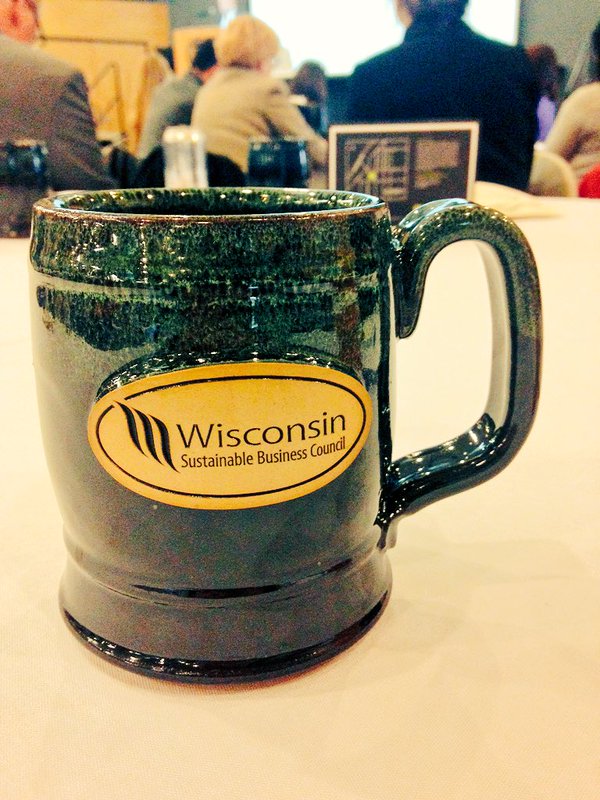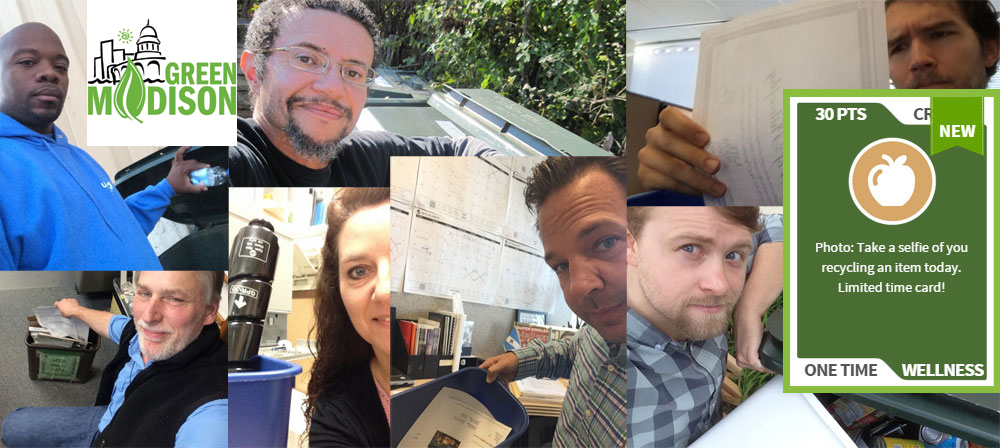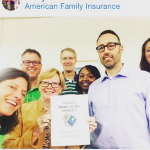Kathy Kuntz
Incentives and Motivation: It’s Complicated!

Sustainability professionals are in the business of making change happen, and that typically means motivating people to do something differently than how they did it previously. Engaging and encouraging a population to change behavior required both incentives and motivation – and that’s complicated! Here are some examples many of our client see in the workplace:
Energy Star is an Easy Cool Choice for Conservation

In April, 2017, more than 1,000 US businesses urged the Trump administration to strengthen the federal Energy Star program, rather than eliminating it. For these businesses, including big names like Staples and Ingersoll Rand, the argument is an economic one. Every tax dollar invested in the Energy Star program saves $680 annually, which is a return any businessperson would appreciate.
Here at Cool Choices, we are also a strong proponent of Energy Star. While we appreciate the economics, we also have other importation reasons for supporting the program.
Leveraging Social Norms to Achieve Sustainability Objectives

As human beings, we are surrounded by social norms – interactions with others that indicate approval or disapproval of our actions. We get cues from folks close to us, such as a partner who rolls their eyes when you start to tell ‘that’ story again. We also get cues from total strangers, like the pedestrian who smiles when I stop for them in the crosswalk.
Picking Up Litter: A Spring Tradition

It’s springtime in Wisconsin, and for us Midwesterners, spring means there’s litter, uncovered from the melting snow, in our yards.
I walk a couple of blocks to the gym most mornings, and when I see trash lying on the ground, I pick it up. This tradition always reminds me of Jack Imholte, the chancellor of my undergraduate alma mater, the University of Minnesota at Morris. I don’t think Jack ever walked past a piece of litter without picking it up. In fact, I have clear memories of him walking across campus, with crumpled paper cup or plastic bag in hand.
Customize Our Game-Based Sustainability Program
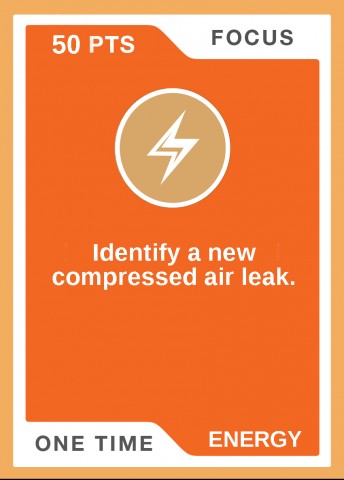
Cool Choices daily action cards can be customized to reflect your specific sustainability goals.
Did you know your organization can customize our game-based sustainability program to meet your specific goals? Our fun and effective game-based approach to corporate sustainability and employee engagement can take your organization’s efforts to the next level—where sustainable practices become the new normal.
Cool Choices offers a fresh and effective way to get rank-and-file employees excited about and involved in corporate sustainability efforts.
When it comes to transforming cultures, one size doesn’t fit all. The Cool Choices platform supports clients who have very specific interests relative to employee engagement and sustainability.
For example:
- In a healthcare setting the business might want to influence employee practices around waste management.
- A law firm may opt to emphasize electronic records.
- A manufacturing plant may choose to put the emphasis on end-of-shift protocols.
In partnership with Cool Choices your organization can customize the daily sustainable actions featured in our online platform, adding actions that are tailored to your unique priorities. We couple these custom actions with our standard ‘deck’ of activities, which helps to ensure there are plenty of opportunities for everyone to be part of the solution.
Contact us to learn more about how we can help you create a fun, social and easy experience that’s custom-made to address your corporate sustainability goals.
Using Team Dynamics to Boost Engagement
“I did not want to let my team down.”
– Cool Choices player
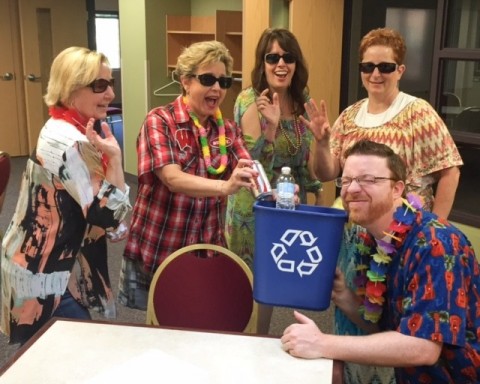
Teams are a cornerstone of the Cool Choices online sustainability game and engagement platform: you must be on a team to play.
We rely on teams because behavior change is hard and research shows it’s less hard when you have social support.
“The data is clear: when individuals are accountable to a team or get encouragement from others, it has a big impact on their well-being — the more support they have, the greater chance they’ll achieve and maintain a healthy lifestyle.” Social Support: Impact on Health and the Bottom Line, Dean Witherspoon
In a game of Cool Choices a team’s standing depends on the activity of all team members—which means players are accountable to each other. It’s not unusual for teammates to develop nudge strategies—ways to remind each other to play.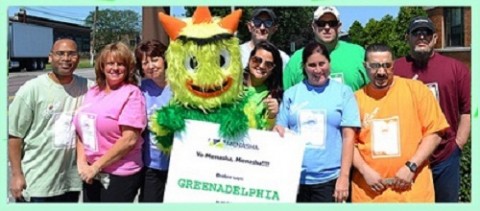
Think about that for a moment: employees spontaneously reminding each other to adopt sustainable practices.
Jim, I saw you turn off the light – claim your Cool Choice so that we stay in the lead!
Hey Ann, I saw you claimed points today for carpooling—nice job! Did you remind Alana to play?
Most Cool Choices players talk about sustainability with colleagues at least once a week during the game. Those are conversations where folks are sharing their values as well as pragmatic strategies for saving energy and resources.
One of the big challenges with inspiring action around climate change is that individuals often feel powerless in comparison to the scale of the issue. Seeing friends and colleagues take action—and being part of a team that is taking action—is empowering. Our players are part of a team and that team is part of a larger community where hundreds or thousands of individuals are taking action.
With support, regular people can reduce their emissions; they can improve the quality of their lives while reducing the waste. Teams are a critical part of that strategy.
How can you apply the benefits of team dynamics to boost engagement in your workplace or community?
Curious about how Cool Choices can help your organization? Contact us for more information.
8th Annual WI Sustainable Business Council Conference
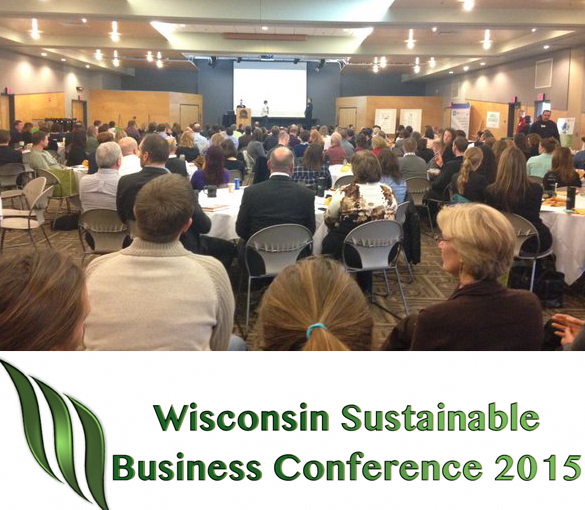 Cool Choices recently co-hosted the Eighth Annual Wisconsin Sustainable Business Council (WSBC) Conference at the University of Wisconsin-Oshkosh. WSBC’s conference features businesses talking frankly about their efforts on the path to sustainability. The tales are insightful and inspiring—I always leave the event feeling a bit more optimistic about our ability to address the enormous climate challenges ahead of us.
Cool Choices recently co-hosted the Eighth Annual Wisconsin Sustainable Business Council (WSBC) Conference at the University of Wisconsin-Oshkosh. WSBC’s conference features businesses talking frankly about their efforts on the path to sustainability. The tales are insightful and inspiring—I always leave the event feeling a bit more optimistic about our ability to address the enormous climate challenges ahead of us.
Our event host, UW-Oshkosh, for example: the Sierra Club ranked UW-Oshkosh the third greenest university in the nation. It was terrific to hear how local officials had accomplished this, engaging the whole campus around sustainable practices, despite a tight budget. Their story was echoed in a variety of other presentations where business leaders talked about saving energy, reducing waste, measuring impacts and mobilizing employees.
And it is not just about the presentations. I also talked to a variety of attendees who were working on innovative projects to green facilities, operations and even supply chains.
The community also highlights the benefits of businesses leading on climate change mitigation. As policy leaders negotiated toward an agreement in Paris, business leaders in Wisconsin talked about their real-world efforts to reduce carbon emissions while increasing profits.
Part of the bliss of coming together each year as a community of business leaders working on sustainability is that it feels good to tell your story to someone who faces similar challenges. The congratulatory pats mean more when they come from someone who knows firsthand how hard it is to shift an organization’s orientation. WSBC has built a community of practitioners and the community is strong, supportive and inspiring.
Posted by Kathy Kuntz, Executive Director at Cool Choices
More about the WSBC Conference
One of the most compelling aspects of this event is the networking. As usual, I was able to build new relationships. I heard about some difficult challenges and about a few outstanding victories. I helped a few people make connections that will make their quests easier and I heard a story or two I will share in the coming months to inspire others. I encourage you to experience this conference in 2016 to reap the benefits of networking with other business leaders engaged in sustainability efforts.
The WSBC Conference is Designed for:
- C Suite Officers, Board Members, Senior Managers
- Small Business Owners, Plant Managers, Sustainability Coordinators
- Green Teams
- Students Interested in Sustainability
Want to Green Your City? Try a Game-Based Approach!
Interested in mobilizing an entire city around sustainability? A game can help.
In 2015 the City of Madison (WI) asked Cool Choices to implement online community-wide games to inspire behavior change, reduce energy use and mobilize the city around sustainability initiatives. This is part of the City’s effort to win the $5 million Georgetown University Energy Prize. During the summer Cool Choices implemented a game with City employees and in September we launched our first community-wide game as part of Green Madison.
To date, Cool Choices has been implemented primarily in workplaces—we help our partners, whether private firms or public agencies, engage employees around sustainable practices. Our online employee engagement game makes it fun, social and easy for individuals to save money, reduce waste and become part of the solution.
Some have asked whether the Cool Choices game could work in other kinds of communities like churches or neighborhoods or even across multiple workplaces. Naturally we’ve had theories, but now we’ve got evidence.
A Municipal Sustainability Initiative & Real Results
The City of Madison community-wide game of Cool Choices involves almost 900 people on teams from more than 40 different businesses, neighborhood associations and community groups. These participants have reported more than 41,000 “cool choices” (sustainable actions), representing over $240,000 in annual savings.
More, Madison’s community-wide game is creating conversations about sustainability in multiple venues across the city. Participants who rent earned points for having conversations with their landlords about efficiency upgrades; homeowners are sharing their conservation strategies in the game’s social stream and, as always, players are posting photos that show off their new sustainable practices.
Implementing a game at the municipal level involves more challenges than a single-business game, to be sure, but there are also more rewards. By celebrating the sustainable actions various Madison participants are taking we’re shifting the conversation and building momentum at a community-wide level. After playing Cool Choices participants are empowered—they know their actions matter and they see themselves as part of a community that shares a commitment to reduce waste and preserve natural resources.
We’ll continue to implement additional rounds of the Cool Choices game in Madison in 2016. We are excited to see even more of what this impressive community will accomplish.
Curious about how Cool Choices can help your city or organization save money and get sustainable? Contact us and we’ll get back to you with more information.
Game-Based Behavior Change at BECC 2015
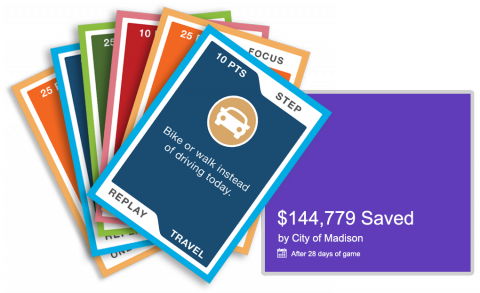
The Cool Choices online sustainability game draws from a variety of social sciences to inspire and create behavior change, cut costs and reduce greenhouse gas emissions.
Cool Choices staff are long-time presenters and participants at the Behavior, Energy and Climate Change (BECC) conference. This event brings together an eclectic group of researchers, practitioners and advocates focused on environmentally sustainable behaviors. We were excited to represent our approach to game-based behavior change at the conference this year.
The 2015 BECC conference provided some terrific insights. For example, a recurring theme at BECC is the power of local. This year several presenters shared research showing that people are more responsive to messages with a local slant—it turns out that a locally-recognizable skyline in a Facebook post will increase clicks.
At Cool Choices we’re acutely aware that local is relevant and that it motivates—it’s why we implement our game and engagement platform within specific communities (within a business, across a city, or as part of an energy efficiency program). The Cool Choices game builds upon on our players’ sense of community, showing them that others in their community are adopting sustainable practices and that, cumulatively, those practices add up to significant impacts. So, just how do we “show” local actions and values in terms of sustainability within an online game environment?
- Social stream: An active social stream within the game platform lets players post photos of their sustainable actions, share sustainability tips or projects, and leave comments on and “cool” the posts of others in their community.
- Teams and Leaderboard: Cool Choices is a team game. Players often tell us they play, and keep playing, because they don’t want to let their team down. Players can check their team or individual standings within their community on the leaderboard.
- Cumulative Data: Players can see the estimated cost savings generated from their community’s efforts. This number builds with each day of game play. At the end of a game each client also receives an impact report.
Learn more about how Cool Choices makes sustainability visible.
Changing behaviors is hard, so for practitioners like us, the annual BECC conference is also an opportunity to trade strategies—to share what’s working, to commiserate about the challenges, and to remember that we’re not alone in this quest. Being part of a community of people who are promoting sustainable practices is powerful. Just as the Cool Choices sustainability game shows that people’s small actions add up, BECC reminds us that our efforts are part of a growing international movement to address climate change. Being part of a community feels good.
In addition to attending conference sessions; Cool Choices led a post-conference workshop on using games as a behavior change strategy, “Want Change? Make it a Game!”, shared our efforts to grow our game into a movement in a conference session, and a presented a poster on how games allow colleagues to coach one another on sustainability.
Curious about how Cool Choices can help your organization save money and get sustainable? Contact us and we’ll get back to you with more information.
Employees Want to Feel Valued
 A 2014 survey indicated that 83 percent of workers planned to look for a new job. These employees said that they were exploring their options because they wanted more pay, more opportunities for advancement and more recognition.
A 2014 survey indicated that 83 percent of workers planned to look for a new job. These employees said that they were exploring their options because they wanted more pay, more opportunities for advancement and more recognition.
The same survey showed that worker unhappiness was down dramatically from the previous year.
Employees don’t feel unhappy, they feel undervalued. Pay, advancement and recognition are all measures of worth.
In thinking about how to respond to these findings I refer the reader to a few of my favorite sources: Daniel Pink’s Drive and Dan Ariely’s Predictably Irrational. We are not very good at understanding our own behaviors or at predicting what will make us happy—and money is not the motivator we tend to think it is. When it comes to conveying that we value someone, context is critically important. In short, it is likely that some employers will read about this survey and respond in a well-intentioned way that reinforces the employee’s urge to leave.
Here at Cool Choices we think a lot about employee engagement—about what makes people feel like a valued part of a workplace community. We see constant evidence that recognition—from peers as well as supervisors—matters a lot. Our partners often marvel at the impact little things—like an email from the boss or a photo on the company intranet—can have on employee morale.
What are you doing to ensure your employees are engaged and feel valued?

